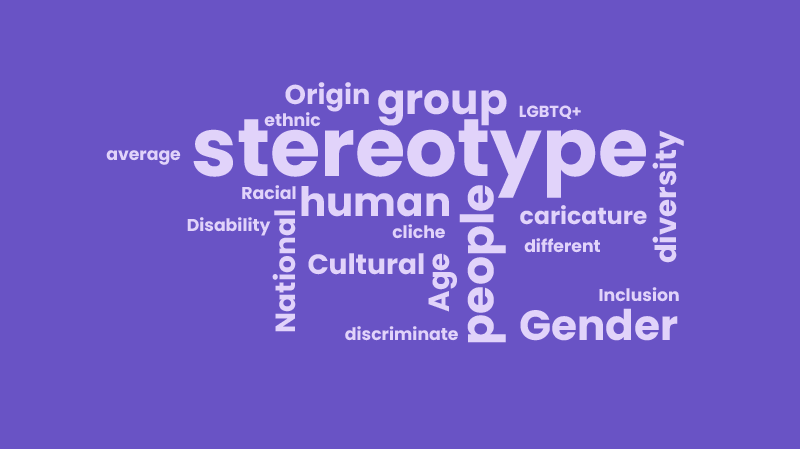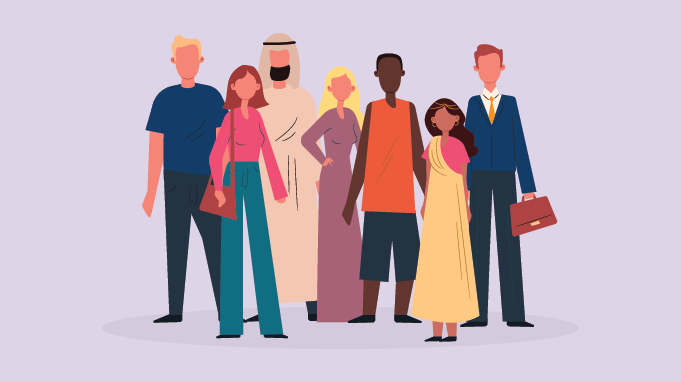9 Strategies To Handle Stereotyping In The Workplace
Workplace stereotyping can have profound and far-reaching impacts on employees and organizations. It involves making assumptions and generalizations about individuals based on certain characteristics. However, the consequences of such stereotyping can be detrimental.
In this blog, we will examine the significant effects of workplace stereotyping and how to handle it for better organizational success.
Key Takeaways
- What do you mean by workplace stereotyping?
- Different types of stereotyping are prevalent in the workplace.
- Negative impacts of workplace stereotyping.
- A glimpse into the different strategies to address workplace stereotyping.
What is Stereotyping in the Workplace?
Workplace stereotyping involves categorizing and labeling individuals based on preconceived notions or biases rather than assessing their abilities, skills, or qualifications.
This can result in unfair treatment, biased judgments, and the perpetuation of stereotypes, which can have detrimental effects on employees and the overall functioning of the workplace.
Types of Stereotyping
In the complex dynamics of the workplace, various types of stereotyping can emerge, leading to biased judgments and unequal treatment.
These stereotypes can be based on various factors, including an individual's physical appearance, communication style, job role, or even personal preferences.
Let us look at their types for better understanding.
Gender stereotyping
Gender stereotypes are preconceived ideas that are arbitrarily assigned based on their gender. Women are often seen as caregivers, while men are seen as providers. This leads to the belief that men are more suitable for leadership roles than women.
Racial and ethnic stereotyping
These stereotypes involve generalizing about people based on their ethnicity or race. These stereotypes form biases and assumptions about intelligence, behavior, or cultural practices.
Age stereotyping
Age-related stereotypes pertain to assumptions about people based on their age group. For instance, the belief that older workers are less adaptable or that younger individuals lack experience and professionalism.
Cultural and National Origin Stereotypes
These stereotypes involve preconceived notions about people from different cultures or countries. They can include assumptions about work ethic, language skills, or religious practices.
Disability Stereotypes
These stereotypes involve misconceptions or generalizations about individuals with disabilities. They can range from underestimating their abilities to assuming they are a burden or incapable of certain tasks.
LGBTQ+ Stereotypes
Stereotypes about LGBTQ+ people often assume things about their behavior, interests, or personality based on their sexual orientation or gender identity.
Stereotypes are simplified beliefs that don't show people's full complexity and individuality. If left unchallenged, they can lead to bias, discrimination, and unfair treatment.
Impacts of Workplace Stereotyping
Workplace stereotyping has profound ramifications that ripple through the fabric of organizations, leaving a trail of negative repercussions in its wake.
It seeps into the very essence of the work environment, eroding employee morale, fracturing team cohesion, and undermining the foundation of an inclusive organizational culture.
Increase Turnover
Stereotypes in the workplace act as a silent catalyst, quietly fueling the flames of turnover. When employees are subjected to biases and unfair treatment based on stereotypes, their loyalty and commitment waver. According to a survey by Harvard Business Review, employees who experience bias or unfair treatment are three times more likely to consider leaving their jobs. The impact is not limited to individuals; it reverberates throughout organizations, leading to increased turnover rates and talent loss.
A Center for Talent Innovation study found that 64% of employees who perceive bias are actively looking for new job opportunities. By acknowledging the role of stereotypes in driving turnover and actively combating them, organizations can create an environment where employees feel valued, respected, and motivated to contribute their best.
Reduced Productivity and Innovation
- In a biased workplace, stereotypes hinder productivity and innovation.
Stereotypes create a homogenous environment, stifling diverse perspectives, ideas, and approaches. - Pigeonholing individuals into predefined roles limits the utilization of their unique talents and contributions.
- Stifled creativity and innovation impede problem-solving and restrict fresh insights.
- Organizations miss out on the benefits of diverse perspectives and fail to unlock their workforce's full potential.
- The stifling effect of stereotypes hampers progress and growth.
Decreased Employee Morale and Satisfaction
- Stereotypes negatively impact employee morale and satisfaction.
- Unfair treatment and constant biases erode motivation and engagement.
- The toxic atmosphere stemming from stereotypes fosters distrust, resentment, and a sense of injustice among employees.
- Stereotypes fracture teamwork, collaboration, and camaraderie.
- Low morale diminishes organizational cohesion, which is crucial for success.
- Decreased morale leads to lower productivity, increased absenteeism, and a heightened risk of burnout.
Impaired Diversity and Inclusion Efforts
Stereotyping undermines diversity and inclusion initiatives within organizations. Stereotypes reinforce biases and hinder the creation of an inclusive environment that values and embraces differences. It can discourage individuals from underrepresented groups from joining or staying with the organization, perpetuating a lack of diversity and stifling innovation and creativity.
Legal and Reputational Risks for the Organization
Organizations that ignore workplace stereotyping face internal repercussions and external legal and reputational risks. Discrimination and bias based on stereotypes can result in legal actions, damage the organization's reputation, and lead to substantial financial costs. In an era of heightened social consciousness and awareness, stakeholders expect organizations to champion diversity, equity, and inclusion. Failure to address and combat stereotypes may lead to public backlash, customer dissatisfaction, and difficulty attracting and retaining top talent. Companies that focus on inclusivity and tackle workplace stereotypes position themselves as industry leaders dedicated to fairness, equality, and lasting success.
Strategies to Address Workplace Stereotyping
To combat the damaging effects of workplace stereotyping, organizations must adopt proactive strategies that dismantle biases, promote diversity, and cultivate an environment of fairness and inclusion.
These strategies aim to challenge stereotypes, educate employees, and establish policies and practices that ensure equal opportunities for all.
By taking a proactive stance against workplace stereotyping, organizations can create a more harmonious and thriving work environment that celebrates every individual's unique contribution and talents.
Education and Awareness Programs
Education and awareness programs serve as the cornerstone for combating workplace stereotyping. Organizations can build knowledge and understanding by training on unconscious biases and the impact of stereotypes. These programs engage employees at all levels, promoting empathy and fostering a sense of shared responsibility in eliminating stereotypes. These initiatives use real-life examples, interactive activities, and open conversations. They aim to help people identify their biases and promote a more inclusive work environment.
Diverse Hiring Practices
One of the most powerful antidotes to workplace stereotyping is embracing diverse hiring practices. Organizations can reduce unconscious biases in hiring by implementing various strategies. These strategies include expanding recruitment networks, using blind resume screening, and having diverse interview panels. Focusing on qualifications, skills, and cultural fit instead of stereotypes helps organizations attract diverse talent. These practices support diversity and inclusivity. They demonstrate that the organization values creating an environment where everyone has an equal chance to succeed.
Creating an Inclusive Organizational Culture
Organizational culture plays a pivotal role in addressing workplace stereotyping. By creating an inclusive environment where individuals feel safe, respected, and empowered, organizations can combat the perpetuation of stereotypes. To achieve this, set rules against discrimination, promote fairness, and encourage diverse perspectives in decision-making. Leaders must lead by example, championing inclusivity and ensuring that diversity is celebrated and valued throughout the organization. Establishing employee resource groups, affinity networks, and mentorship programs further reinforces a culture that embraces and supports individual differences.
Transparent and Fair Performance Evaluation
Implement transparent and fair performance evaluation processes focusing on objective criteria and outcomes rather than subjective judgments. Train managers to evaluate employees based on merit and performance, ensuring equitable treatment.
Implementing Policies against Discrimination and Harassment
Organizations must have robust policies to combat workplace stereotyping to prevent discrimination and harassment effectively. Clear guidelines and procedures should address stereotyping, bias, and unfair treatment. These policies should be communicated clearly to all employees, along with information on reporting incidents and seeking support. Organizations must consistently enforce these policies and apply appropriate consequences to those who discriminate. Zero-tolerance shows stereotypes won't be allowed, creating a respectful and responsible workplace.
Providing Diversity and Sensitivity Training
Diversity and sensitivity training programs serve as a valuable tools in raising awareness, challenging biases, and fostering empathy within the workforce. These programs provide opportunities for employees to develop cultural intelligence, understand the impact of stereotypes, and learn effective communication strategies. Employees can learn about different perspectives and create a more inclusive and respectful workplace through workshops, role-playing, and case studies. Ongoing training ensures that employees remain informed about emerging issues, evolving societal norms, and maintaining an inclusive environment.
Promoting Diversity in Leadership Positions
Organizations must actively promote diversity in leadership positions to address workplace stereotyping. Organizations can break stereotypes by giving chances for career growth to people from underrepresented groups. Creating mentorship, sponsorship, and leadership programs for diverse talent builds a group of future leaders who defy stereotypes and motivate others. When people in powerful positions break stereotypes, it inspires employees to follow their dreams and accept their differences. This creates a culture that values diversity and inclusivity.
Mentorship and Sponsorship Programs
Create mentorship and sponsorship programs that connect individuals from diverse backgrounds with senior leaders or experienced professionals. These programs help break down barriers, provide guidance, and offer opportunities for professional growth.
Employee Resource Groups
Establish employee resource groups that allow individuals with shared backgrounds or identities to connect, share experiences, and influence positive change. ERGs can contribute to a sense of belonging and provide valuable insights to inform organizational initiatives.
Using strategies to fight workplace stereotypes is important in creating inclusive organizations. Investing in education, diverse hiring, inclusive cultures, open communication, strong policies, training, and diverse leadership can create an empowering environment. This place can change stereotypes, discover talent, and achieve long-lasting success. Let's make workplaces that appreciate diversity and help everyone reach their potential.
Finally
Stereotypes hold people back in busy workplaces and stop organizations from succeeding. With knowledge and determination, we can break chains and create a future that values diversity, promotes inclusivity, and embraces authenticity.
We have revealed how workplace stereotyping affects individuals, teams, and organizations, showing its hidden costs and significant impact. Through education, diverse hiring practices, inclusive cultures, open communication, strong policies, training, and the promotion of diverse leadership, we can create workplaces that thrive on the richness of diverse perspectives and talents.
Let's break stereotypes, question biases, and support each other to create inclusive workplaces encouraging teamwork, creativity, and equality. We can change workplace culture to ensure everyone is valued, respected, and has the same chances to succeed.
FAQs
Q. Is workplace stereotyping always intentional, or can it also occur unintentionally?
A. Workplace stereotyping can occur both intentionally and unintentionally. While some instances may involve conscious biases and prejudices, others can stem from unconscious biases or ingrained societal norms that influence perceptions and behaviors.
Q. How can workplace stereotyping impact the mental health and well-being of employees?
A. Workplace stereotyping can have significant impacts on the mental health and well-being of employees. Being subjected to unfair treatment based on stereotypes can lead to feelings of frustration, anxiety, low self-esteem, and emotional distress. It can also contribute to a hostile work environment and hinder overall job satisfaction.
Q. Are there any specific industries or sectors that are more prone to workplace stereotyping?
A. Workplace stereotyping can be observed in various industries and sectors, as stereotypes are a product of societal beliefs and biases that can permeate any workplace environment. However, industries that have traditionally been male-dominated, such as technology or finance, may face specific challenges related to gender stereotyping.
Q. Can workplace stereotyping affect career advancement opportunities for individuals from marginalized groups?
A. Yes, workplace stereotyping can impede career advancement opportunities for individuals from marginalized groups. Stereotypes can lead to biased decision-making in hiring, promotions, and assignments, limiting the chances for individuals to showcase their skills and abilities. This can result in a lack of representation and diversity in leadership positions.
Q. What are some effective strategies for bystander intervention to address workplace stereotyping when it occurs?
A. Bystander intervention is a crucial strategy to address workplace stereotyping. It involves individuals stepping in and taking action when witnessing instances of stereotyping or unfair treatment. This can include speaking up against inappropriate comments, supporting the targeted individual, or reporting the incident to relevant authorities or HR departments. Bystander intervention promotes a culture of accountability, respect, and inclusion within the workplace.
















